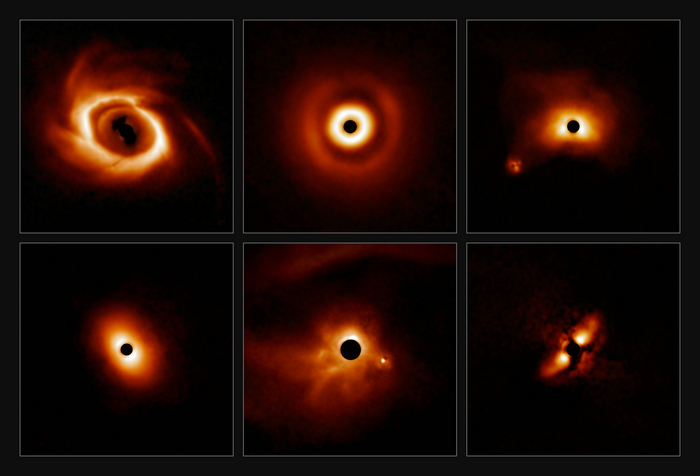Astronomers discover major new indicator for how planets form
Astronomers took stunning images of dusty rings around distant stars, a sign of possible planet formation

How planets form, or if they form at all, may depend on how massive their star is.
New research presented Wednesday at the 240th Meeting of the American Astronomical Society describes how researchers trained the Gemini telescope in Chile on more than 40 young, massive stars, revealing new information about how their size could impact planet formation. Most of the stars sat at the center of swirling disks of dust and gas known as protoplanetary disks, which is where planets form.
The new findings suggest that the form and behavior of protoplanetary disks depends heavily on the size of the star at their center. For stars only somewhat more massive than our Sun, the disks broke into dusty rings. In contrast, disks of more massive stars were not ringed.
“Systems with small dust-grain rings are only found around stars with masses less than three times the mass of the Sun,” Evan Rich, a postdoctoral researcher in astronomy at the University of Michigan and lead author of the new study, said in a statement. “This is important because forming planets are thought to create the ringed structure, and our findings suggest that the planet formation process might be different for stars larger than three times the mass of the Sun.”
The study, called Gemini-Large Imaging with GPI Herbig/T-Tauri Survey, or Gemini Lights, observed 44 target stars of two different classes, T-Tauri stars and Herbig Ae/Be stars.
T-Tauri stars are variable stars, meaning their brightness varies as seen from Earth, they’re less than 10 million years old and three times the mass of our Sun or smaller. Herbig Ae/Be stars are also younger than 10 million years, but possess different chemical signatures in their light than T-Tauri stars, and can be anywhere from two to eight times as massive as the Sun.
This new study found 80% of the stars surveyed possessed protoplanetary disks, but only nine had ringed disks. Four of the target stars had spiral arm structured disks, four were large, irregularly shaped disks, and 12 were undetermined due to limitations in the observations. A continuous disk without a gap or hole in the center, was seen around 11 target stars, and there was some overlap among types, with one of the spiral arms disks also qualifying as a continuous disk.
The study also discovered one new candidate exoplanet around V1295 Aquilae, a star about 278 light years away from Earth in the constellation Aquila, and a new candidate brown dwarf star.
Some theories of planetary formation hold that forming planets are responsible for the gaps in a protoplanetary disks, and that how massive a planet must be to open such a gap is related, proportionally, to the mass of its star, Dr Rich and his co-authors note in a preprint of their study published on the Arxiv server. While their observations could support such theories, they caution, the association between smaller mass stars and ringed disks could be due to it being more difficult to image larger stars.
“The detectability of rings around more massive systems is complicated because the central stars are also more luminous, increasing the outer disk’s brightness,” the researchers write. “Future work needs to verify these findings and search for massive systems that host ringed and gaped structures.”
Subscribe to Independent Premium to bookmark this article
Want to bookmark your favourite articles and stories to read or reference later? Start your Independent Premium subscription today.

Join our commenting forum
Join thought-provoking conversations, follow other Independent readers and see their replies